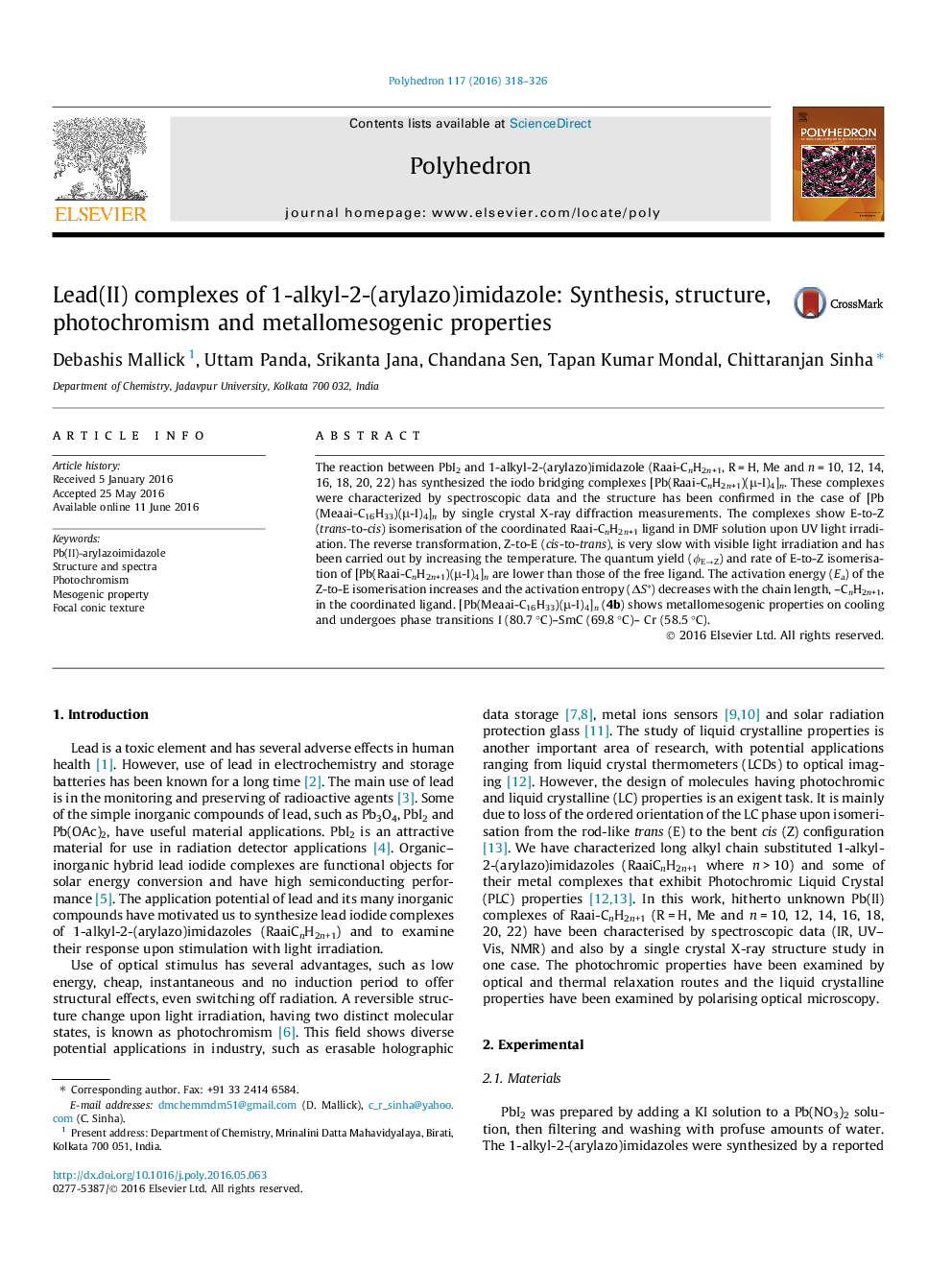| Article ID | Journal | Published Year | Pages | File Type |
|---|---|---|---|---|
| 1336212 | Polyhedron | 2016 | 9 Pages |
The reaction between PbI2 and 1-alkyl-2-(arylazo)imidazole (Raai-CnH2n+1, R = H, Me and n = 10, 12, 14, 16, 18, 20, 22) has synthesized the iodo bridging complexes [Pb(Raai-CnH2n+1)(μ-I)4]n. These complexes were characterized by spectroscopic data and the structure has been confirmed in the case of [Pb(Meaai-C16H33)(μ-I)4]n by single crystal X-ray diffraction measurements. The complexes show E-to-Z (trans-to-cis) isomerisation of the coordinated Raai-CnH2n+1 ligand in DMF solution upon UV light irradiation. The reverse transformation, Z-to-E (cis-to-trans), is very slow with visible light irradiation and has been carried out by increasing the temperature. The quantum yield (ϕE→Z) and rate of E-to-Z isomerisation of [Pb(Raai-CnH2n+1)(μ-I)4]n are lower than those of the free ligand. The activation energy (Ea) of the Z-to-E isomerisation increases and the activation entropy (ΔS∗) decreases with the chain length, –CnH2n+1, in the coordinated ligand. [Pb(Meaai-C16H33)(μ-I)4]n (4b) shows metallomesogenic properties on cooling and undergoes phase transitions I (80.7 °C)–SmC (69.8 °C)– Cr (58.5 °C).
Graphical abstractUpon light irradiation the coordinated 1-alkyl-2-(arylazo)imidazole (Raai-CnH2n+1) shows E-to-Z (trans-to-cis) isomerisation about the –NN– bond and the reverse transformation, Z-to-E (cis-to-trans), is achieved by thermal treatment. The rate, quantum yield, activation energy and entropy of activation are controlled by the chain length, –CnH2n+1. [Pb(Meaai-C16H33)(μ-I)4]n (4b) shows a metallomesogenic property in the cooling cycle. The structures of the complexes have been supported by single crystal and other spectroscopic data.Figure optionsDownload full-size imageDownload as PowerPoint slide
